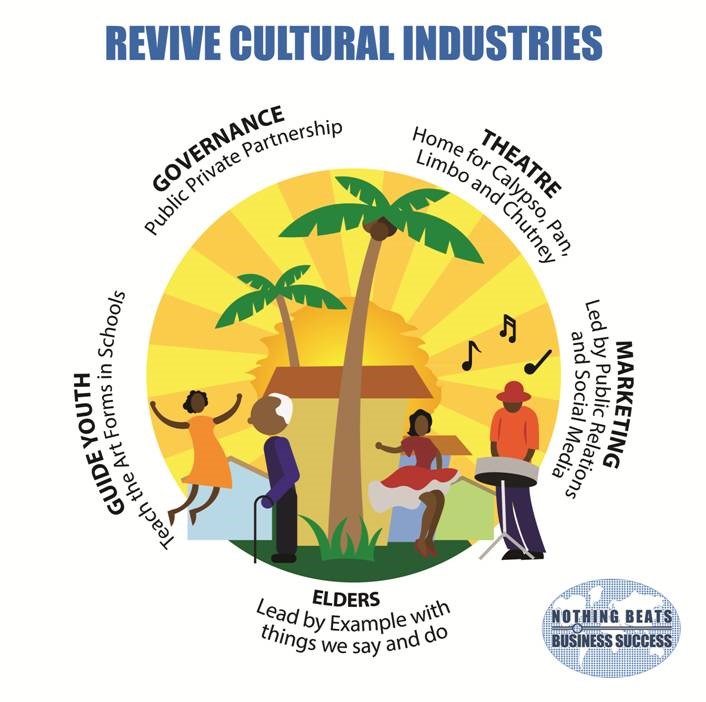“For life is more than food, and the body more than clothing.” – Luke 12:23
Last Thursday, calypsonian Robert “De Mighty Trini” Elias was guest speaker at the weekly meeting of the Rotary Club of Central Port of Spain.
He was hailed, by at least one long standing member of our club as “the most entertaining presenter that we have ever had”.
His presentation was uniformly heralded by Rotarians, guests and members of the press, who were in attendance, as informative and amusing as well as exciting and full of ideas for taking the socio-economic contribution of the creative industries to a new level.
This column is a sequel to last week’s column as we piggy back on the Mighty Trini’s thoughts and begin to flesh out his ideas into a five point rolling five year plan which is time specific, realistic and measureable.
These thoughts included the need for elders to lead by example, teaching the cultural art forms in schools, building on the governance partnership of the public/private sectors and civil society, establishing a dedicated theatre for the carnival art forms and using the modern forces of marketing to identify the needs and wants of the consumer and satisfying these at a profit.
(1) The first verse of the song “The Greatest Love of all” begins “I believe that children are our future; Teach them well and let them lead the way”. Our youth can only be as good as the example given by their parents and teachers. We must conceptualize a plan which goes back to square one and creatively trains the parents and the teachers who are charged with the responsibility of laying a sound foundation and providing firm support for these children.
(2) Mr. Goh Chok Tong, second Prime Minister of the Republic of Singapore, said more than 25 years ago that Singapore would not consider itself first world until music is taught in our schools for only then can it be said that “we appreciate the finer things in life”. In T&T, we must develop a plan which teaches the indigenous cultural art forms in schools so that we better appreciate our culture and are better able to share with others.
(3) The governance of a country, in my opinion, is best rolled out as a partnership between the public and private sectors and members of civil society (including Rotary clubs) in order to ensure that all societal interests are well represented. The government should not be expected to do it alone. We need to carefully delineate the roles of the social partners and build on existing plans which would seek harmonious holistic development of the country. When the country wins, we all win!
(4) There are many venues at which Calypso, Pan, Limbo and Chutney (an Indo-Caribbean musical genre) are randomly showcased. The design of most of these venues leaves much to be desired as an acoustically optimal space and hence the audience is robbed of the purity of the art form experience. I often refer to my experience over 50 years ago when a Trinidadian steel band was in concert at the Royal Albert Hall in London. Sheer ecstasy, when compared to the sound that is witnessed in the average venue. We need to seek expert advice and plan for a multi-purpose controlled environment venue where the local art forms may be choreographed and presented on a year round basis as a major tourist attraction.
(5) Finally, the role of marketing in any business enterprise is to provide “life” to stimulate the goal of consumer satisfaction and the objective of optimizing revenue and ultimately profitability. We therefore need to design a marketing plan aggressively led by Public Relations and Social Media which is then applied to the four ideas delineated above.

As we seek to arrest the haemorrhaging in our societies let us learn from the past and recapture some of those sound foundation pillars which may have temporarily eluded us. Let us then motivate ourselves to revive and develop our cultural industries as a means of involving all our people and strengthening the courses of action for the sustainability of posterity.
